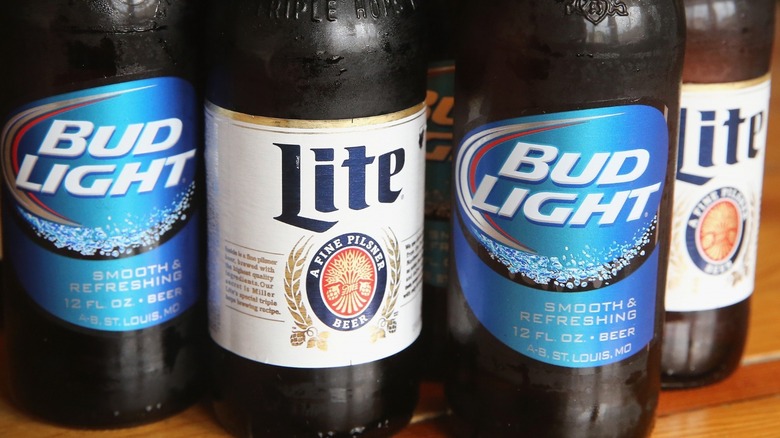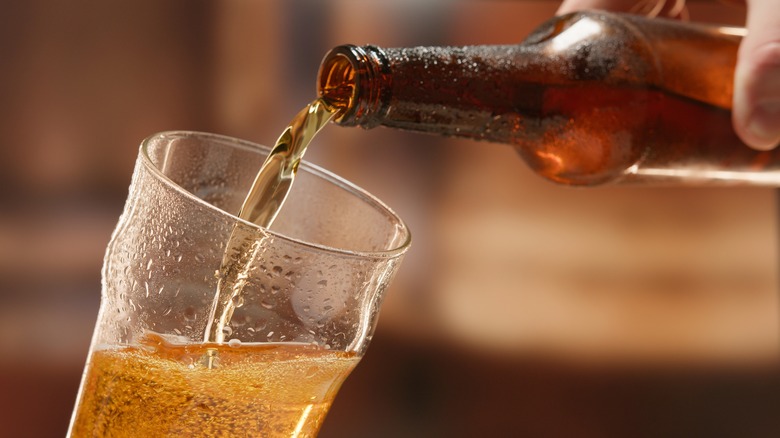Miller Lite Vs Bud Light: Everything You Need To Know
Although beer isn't for everyone, those who enjoy the flavor would probably agree that variety is far from lacking when it comes to the beverage. Per Tapville Social, there is said to be more than 100 unique styles of beer in the world, more than enough to quench any consumer's palate.
Two of the most recognizable names in light beer, Miller Lite and Bud Light had different upbringings. Per All About Beer, Miller, which is known for creating the first mainstream light beer, came into possession of its original recipe by taking over the Meister Brau brewery in Chicago after it went bankrupt. The company tweaked the beverage, rebranding it as "a low-calorie brew that tasted like beer."
According to Beverage Beaver, Bud Light was introduced in 1982 as a direct result of consumers' evolving needs. To combat the bitterness of original Budweiser, the company released Bud Light with an IBU of 6 as opposed to Budweiser's current IBU of 12.
With wildly different origins, it begs the question: what's the difference when it comes to taste and production?
A full breakdown
There are many similarities and differences that separate Bud Light and Miller Lite. One of the first similarities — both beverages have the same ABV of 4.2%, according to Vine Pair. They also both fall under the category of Lite American Macro Lagers, which boast a crisp taste with a light body and flavor. A notable difference for fans of "diet" beer — Miller Lite only has 96 calories per can while Bud Light contains 110.
As far as production is concerned, you might remember a 2019 Super Bowl ad where Bud Light bashed MillerCoors (the company over Coors Lite) for using corn syrup in its mix, unlike Bud Light which uses a mash that contains rice. The ad sparked a lawsuit that eventually led to the removal of "no corn syrup" labels on Budweiser packaging, per CNBC.
When it comes to taste, Draft Mag describes Miller Lite as "nutty," which could either draw in or push away consumers depending on preference. Bud Light is said to have a smoother mouth feel, so it's easier to drink in fast-paced environments.
For some, neither of these brews seem to hit the spot, and that's okay. With so many options and new offerings each year, you'll surely find the best beer for you eventually.

